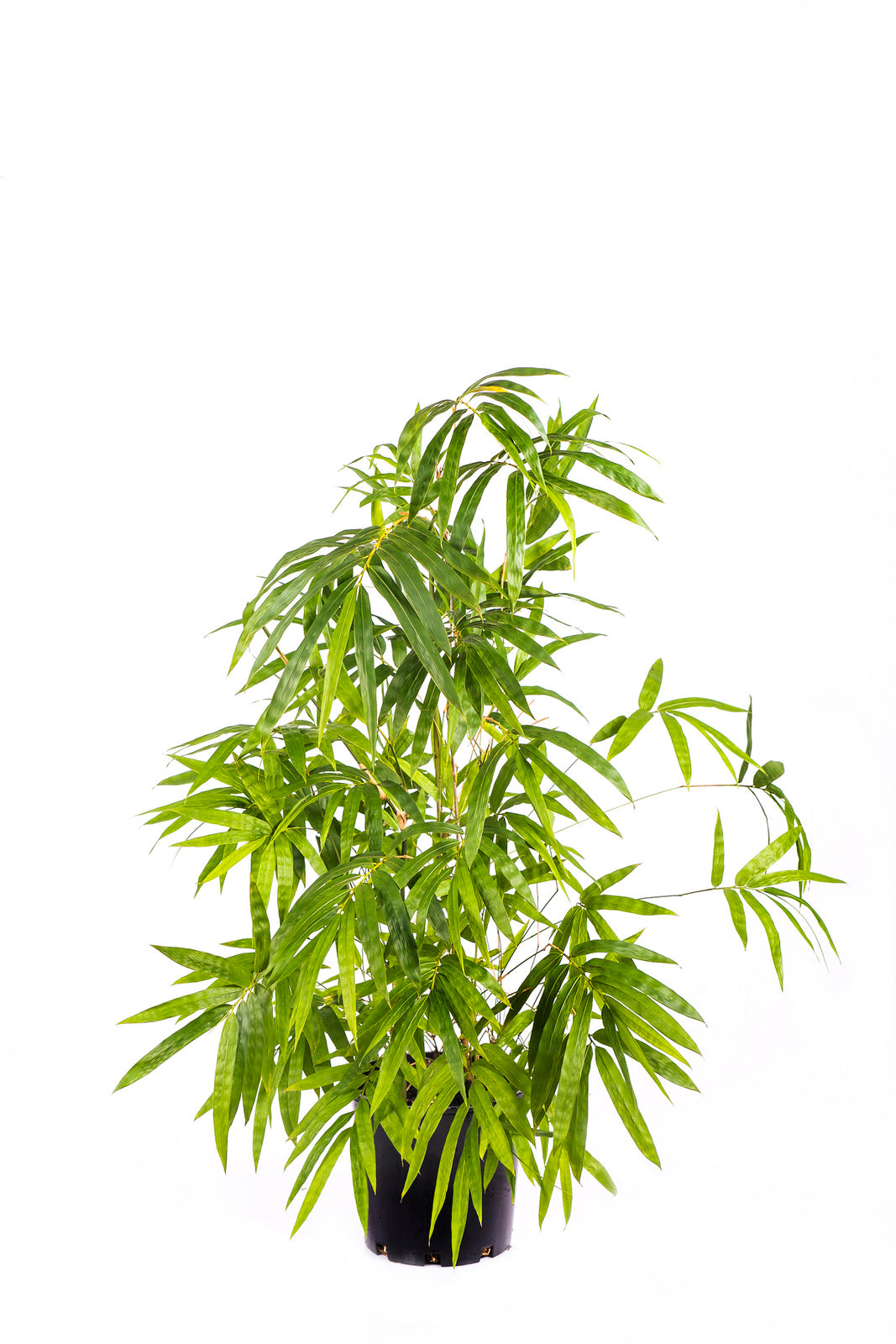Here's some hot tips on how to care for your new bamboo.
If you are receiving our plants by box, please open the top carefully, as the tops are very carefully twisted around and can jack-in-the-box out!
Planting
- Once you have your bamboo home, they should preferably be planted immediately. If you are not ready to plant right away, then place them in a slightly shaded location away from high winds and give them a good water. (Note: if you have received them by freight, just re-wet the soil by dunking the entire plant in a bucket until the bubbles stop then take them out again - might be 1-2mins per plant. This will help to rehydrate them immediately).
- Dig hole twice as wide as the diameter of the pot/planter bag and to about the same depth as the pot. There is little need to dig deep holes due to the shallow rooted nature of bamboo - roots typically grow in top 30-50cm of ground level.
- Water the hole before putting the plant in. Roots should NOT be teased out - teasing the roots will just cause damage to the root system. Back fill the soil around the root ball and then give a good flooding with water. The water will cause the loose soil around the root ball to settle, removing any air pockets around the roots. This step is VITAL. Poorly backfilled soil or air pockets around the root ball can cause the root balls to dry out and cause stress to the bamboo.
- There is no need to mound up the soil around the plant, just plant it at ground level, leaving a bit of a moat around it to collect water.
Sometimes, the bamboo plants that we sell can be tall and culms may not remain perfectly upright after planting. This is nothing to worry about as the original culms and foliage that is on the plant at time of purchase is not going to grow anymore, rather new growth is going to be from new shoots growing from the ground up. You can put a stake in the ground and tie the bamboo to it if you want to, but this would be more for just visual appearance rather than necessity.
Planting bamboo can be done any time of year, with the exception being if you are in an area with heavy frosts, in which case its best not to plant during winter. Planting in Spring and Summer will produce very quick visible results - since it’s the main growth period of the bamboo. Since growth is much quicker during Spring and Summer, the time it takes for the bamboo plants to get established is much shorter during this period. Spring and Summer is therefore the ideal time to plant.
Watering
Following the planting of bamboo, it is crucial that they be well watered for the first 6 weeks - by this we mean a good deep soaking at the base of the culms every couple of days. Once established bamboo are hardy and will not die if left unwatered, though having said this, they will definitely give more rewarding results if watered regularly.
Mulching
Bamboo loves a good mulch layer – 50-100mm deep. By mulching the soil around the bamboo, you're doing 3 things: reducing moisture loss; providing organic matter to the plant (which decomposes and 'feeds' the bamboo); and preventing grass / weeds from growing up around the plant.
The best types of mulch is basically anything organic that can decompose to enrich the soil and thus providing the bamboo with nutrients. Raking up leaves around the plants is a great option. Some other options are sugar cane mulch, hay, or straw. Even green grass clippings will do the trick (spread thinly). Note - be cautious with barks such as tea tree as it can change the PH of soil.
Don't worry about keeping the mulch away from the stems of the bamboo (as is the case with trees) - this does not affect bamboo. New shoots emerging from the ground will find their way through the mulch layer.
Fertilising
Bamboo loves nitrogen - all grasses do, and after all, bamboo is a type of grass. Any fertiliser that is good for lawns, grasses, palms, etc will be good for bamboo. We use Osmocote 6-9month release in the nursery – and as a guide just before Spring is a great time to throw some fertiliser on your bamboo then cover with a light mulch. Ensure you follow the instructions on quantities so you don’t overdo it.
For pots and troughs fertilise with liquid (eg. Seasol) or slow release product (eg. Osmocote) every 2-3 months and replenish potting mix each 4-6 months as they require added nutrients if not in the ground.
Clump Maintenance
Bamboo, like most plants, does need a bit of TLC for it to look its best. A few years after planting a bamboo, the older culms within the clump will start dying, possibly giving the clump an untidy appearance. It is at this stage that that its time to get crafty with the old pruning saw and secateurs. A quick half-hour will leave your bamboo looking refreshed and looking the way it was intended. Winter is the best time to do this since that is when there are no new soft shoots within the clump that could be damaged during the process.
And remember, bamboo will tell you what it needs:
- Dry, leaf curls over or not sending up new shoots – water & nutrients
- Lots of dry stems – lack of water and/or poor soil
- Mouldy / dark marks / growing oddly – too much water and/or fungus
- Yellow / dry / minimal leaf – water and nutrients / fertilizer.
If you have a specific garden question, please contact us. Good luck with your new bamboo garden!


Leave a comment